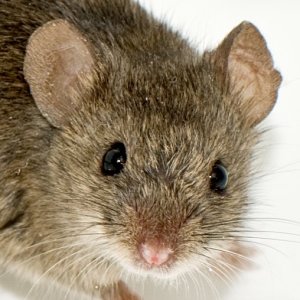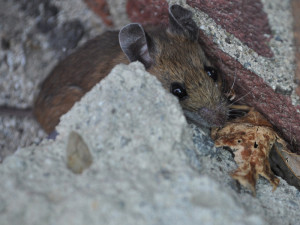Winter Mouse Invasion
With Fall’s cooler temperatures, there’s always the possibility of a mouse invasion in your home. After a colony of mice enters a structure and finds it to be safe and warm, they rarely venture outside again, leaving you with thoughts of disease carrying rodents and the damage they can cause.
 Mouse infestations aren’t always obvious to homeowners. These destructive little rodents often live in hidden areas within your home, including storage boxes, attics, lofts and wall interiors and they only emerge when they search for food.
Mouse infestations aren’t always obvious to homeowners. These destructive little rodents often live in hidden areas within your home, including storage boxes, attics, lofts and wall interiors and they only emerge when they search for food.
Mouse Facts:
-
Mice living within walls rarely leave their nests during daylight.
-
Mice carry and transmit viruses, bacteria and other diseases.
-
Mice are good jumpers, climbers and swimmers. In fact, mice can jump a foot into the air, allowing them to easily climb up onto kitchen counters or into pantries to access food. To prevent mice and other pests from getting into your food, store all pantry items in hard, plastic containers with a tightly sealed lid.
-
Mice can run upside down along a line for a good distance.
-
Despite their tiny bodies (and even smaller stomachs!), mice eat between 15 and 20 times a day. Because of their frequent eating habits, they prefer to build their homes near food sources.
-
 Mice can squeeze through openings as small as the size of a dime. This means that a small crack or opening on the exterior of your home (such as where utility pipes enter) is like an open door for mice. Prevent mice from gaining access to your home by sealing any openings on the exterior with a silicone caulk. You can also fill gaps and holes inside your home with steel wool.
Mice can squeeze through openings as small as the size of a dime. This means that a small crack or opening on the exterior of your home (such as where utility pipes enter) is like an open door for mice. Prevent mice from gaining access to your home by sealing any openings on the exterior with a silicone caulk. You can also fill gaps and holes inside your home with steel wool.
Indications of a mouse infestation are:
-
Gnawing, clawing and squeaking sounds.
-
Droppings, urine pools and tracks are often visible.
-
Holes in walls, floors, ceilings and foundations.
-
Bite or chew marks on food sources and wooden surfaces.
-
Nests – Rodents build nests from soft, fuzzy, or warm materials, such as fabric, furniture stuffing, quilt batting, shredded paper, grass, and twigs.
-
Grease marks caused by oil and dirt on the rodent’s coats as they wedge thru openings in your home.
Mice gain access thru openings in your roof as well. Occasional roof inspections and some maintenance tips will insure that this access point to your home is blocked:
-
Caulk openings around exhausts, equipment, and where lines enter the building
-
Remove stacked building materials and debris
-
Replace missing or damaged shingles; repair tears in rubber roof surfacing
-
Add thresholds & weather-stripping to rooftop emergency exit doors
-
Screen ventilator stacks and vents, including soffit vents
-
Install or reinstall metal flashing on joints and edges, and around chimneys
-
Prune back tree limbs and ivy that are touching the house
-
Install rodent guards on conduits and lines that lead to the house
Once inside your home, mice use lines or pipes in ceilings and wall voids to go anywhere they wish.
Don’t let annoying mice take over your home! Contact PermaTreat for your free inspection or estimate.
Learn more about the different types of mice that may be infesting your home.


































































